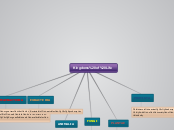"Zebras, Unhappy Marriages and the Anna Karenina Principle"
Around the Globe
None:
Australia
Sub-Sahara Africa
Tibet and adjacent highlands
yak
Southwest Asia
seven of the wild ancestors
13 / 14
Including: sheep, goat, cow
(ox or cattle), pig, horse,
arabian (one-humped) camel,
bacterian (two-humped) camel,
donkey, reindeer, water buffalo,
yak, bali cattle, and mithan.
Others
North America
muscovy duck
Africa
guinea fowl
Mesoamerica
turkey
Eurasia
wolves
goose
duck
China
chicken
South America
llama and alpaca
Divergences
Smaller brains and less developed sense organs.
Size
guinea pigs grew
cows, pigs, and sheep shrunk
FaCtS!
Most captives are eventually eatedn, though some are kept just as pets.
If some local wild mammal species of those continents had been domesticable, some Australian, American, and African peoples would have domesticated them and gained great advantage from them, just as they benefited from the Eurasian domestic animals that they immediately adopted when those begame available.
By the 19th century North America's Great Plains Indians were famous as expert horse-mounted warriors and bison hunters, but they did not even obtain horses until the late 17th century.
The only thing that prevented horses from spreading beyond West Africa was trypanosome diseases borne by tsetse flies.
Major Domesticated Animals
The Minor Nine
Mithan
Wild Ancestor: the gaur (another relative of the aurochs) of India and Burma. Still confined as a domestic animal to that area.
Bali Cattle
Wild Ancestor: the banteng (a relative of the aurochs) of Southeast Asia. Still confined as a domestic animal to that area.
Yak
Wild Ancestor: the wild yak of the Himalayas and Tibetan plateau. Still confined as a domestic animal to that area.
Water Buffalo
Wild Ancestor lives in Southeast Asia. Still used as a domestic animal mainly in that area, though many are also used in Brazil and others have escaped to the wild in Australia and other places.
Reindeer
Wild Ancestor: the reindeer of northern Eurasia. Still largely confined as a domestic animal to that area, though now some are also used in Alaska.
Donkey
Wild Ancestor: the African wild ass of North Africa and formerly perhaps the adjacent area of Southwest Asia. Originally confined as a domestic animal to North Africa and western Eurasia, more recently also used elsewhere.
Llama and Alpaca
These appear to be well-differentiated breeds of the same species, rather than different species. Wild ancestor: the guanaco of the Andes. Still largely confined to the Andes, although some are bred as pack animals in North America.
Bactrian (two-humped) camel
Wild Ancestor: now extinct, lived in Central Asia. Still largely confined to Central Asia.
Arabian (one-humped) camel
Wild Ancestor: now extinct, formerly lived in Arabia and adjacent areas. Still largely restricted to Arabia and northern Africa, though feral in Australia.
The Major Five
Horse
Wild Ancestor: now extinct wild horses of southern Russia; a different subspecies of hte same species survived in the wild to modern times as Przewalski's horse of Mongolia. Now worldwide.
Pig
Wild Ancestor: the wild boar, distributed over Eurasia and North Africa. Now worldwide. Actually an omnivore, whereas the other 13 of teh Ancient Fourteen are more strictly herbivores.
Cow, alias Ox or Cattle
Wild Ancestor: the now extinct aurochs, formerly distributed over Eurasia and North Africa. Now worldwide.
Goat
Wild Anestor: the bezoar goat of West Asia. Now worldwide/
Sheep
Wild Ancestor: the Asiatic mouflon sheep of West and Central Asia. Now worldwide.
To be domesticated...
Social Structure: must live in herds, maintain dominance hierarchy, and occupy overlapping home ranges
Tendency to Panic: one must be able to catch an animal to tame it
Nasty Disposition: some animals simply refuse to be caught and tamed, they are too feral (such as zebras which beome exceedingly dangerous as they age)
Problems of Captive Breeding: many creatures have elaborate courtship rituals (such as cheetahs) and refuse to perform the ritual(s) in question
Growth Rate: domestic animals must grow quickly to be worth raising
Diet: it's easier to feed herbivores than it is to raise herbivores to feed to carnivores









